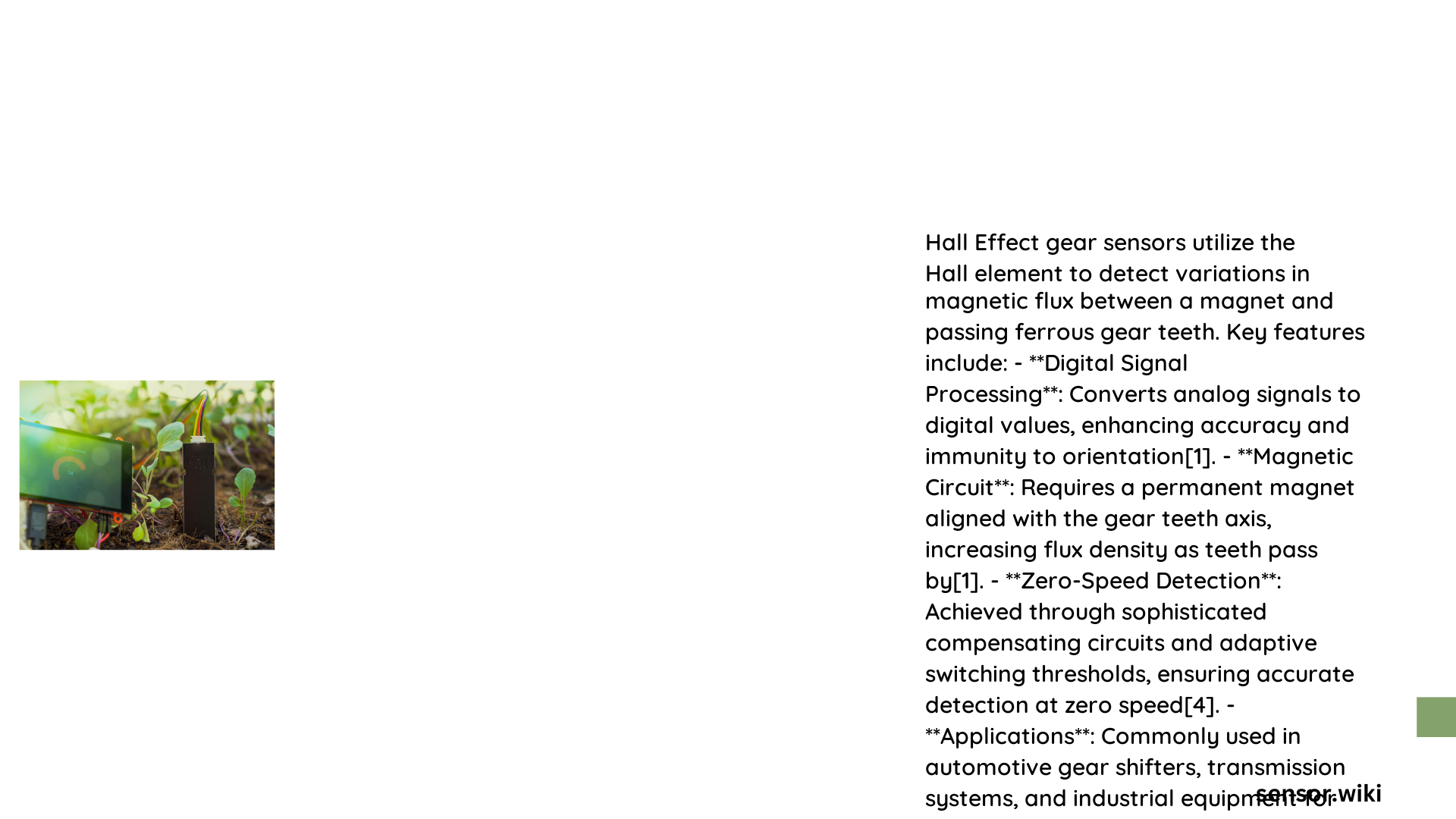Hall effect sensor gear represents a sophisticated electromagnetic technology enabling precise speed, position, and rotation measurement across complex mechanical systems. These advanced sensors leverage magnetic field interactions to detect gear tooth movements with exceptional accuracy, providing critical data for automotive, industrial, and engineering applications. By converting magnetic field variations into electrical signals, hall effect sensor gear technologies offer robust, contactless sensing capabilities that surpass traditional mechanical measurement techniques.
What Makes Hall Effect Sensor Gear Unique?
Hall effect sensor gear technologies distinguish themselves through several remarkable characteristics:
Core Technological Principles
- Magnetic Field Sensitivity: Detects minute magnetic field variations
- Contactless Measurement: No physical gear tooth contact required
- High Precision: Microsecond-level response times
- Durability: Withstands extreme environmental conditions
Performance Specifications
| Parameter | Typical Range |
|---|---|
| Operating Voltage | 4V – 24V DC |
| Temperature Range | -40°C to +125°C |
| Sense Distance | 0.2mm – 7mm |
| Switching Frequency | Up to 12 kHz |
How Do Hall Effect Sensor Gear Work?

Hall effect sensor gear operate through sophisticated electromagnetic principles. When a ferromagnetic gear tooth passes near the sensor, it generates a magnetic field variation. This variation triggers a voltage change in the sensor’s semiconductor material, producing an electrical signal proportional to the gear’s movement.
Key Operational Mechanisms
- Magnetic Field Detection
- Semiconductor material responds to magnetic flux changes
- Generates proportional electrical output
-
Enables precise gear tooth tracking
-
Signal Processing
- Electronic circuits convert magnetic variations
- Amplify and condition sensor signals
- Provide clean, reliable measurement data
Where Are Hall Effect Sensor Gear Applied?
Hall effect sensor gear find extensive applications across multiple domains:
Automotive Systems
- Engine management
- Transmission speed monitoring
- Anti-lock braking systems
- Traction control mechanisms
Industrial Equipment
- Conveyor belt speed tracking
- Rotational machinery monitoring
- Precision manufacturing processes
- Robotic system feedback
What Performance Challenges Exist?
Technical Limitations
- Potential signal interference
- Temperature-induced measurement variations
- Mechanical vibration effects
- Magnetic field distortions
Mitigation Strategies
- Advanced signal filtering
- Temperature compensation circuits
- Robust mechanical design
- Sophisticated calibration techniques
How Are Sensor Specifications Determined?
Manufacturers evaluate hall effect sensor gear through rigorous testing:
- Response Time Analysis
- Temperature Endurance Evaluation
- Signal-to-Noise Ratio Assessment
- Environmental Stress Testing
Future Development Trajectories
Emerging trends in hall effect sensor gear technology include:
– Miniaturization
– Enhanced digital signal processing
– Improved temperature stability
– Integration with IoT platforms
Technological Innovations
- Nano-scale semiconductor materials
- Machine learning calibration algorithms
- Advanced magnetic field sensing techniques
Conclusion
Hall effect sensor gear represent a critical technological interface between mechanical motion and electrical measurement, offering unprecedented precision and reliability across diverse applications.
